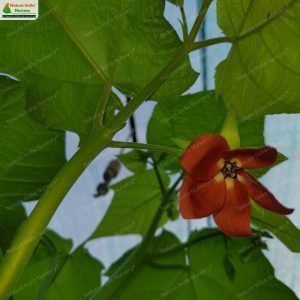Putranjiva roxburghii, commonly known as the Lucky Bean Tree, is a medium-sized evergreen tree that grows up to 20 meters in height. Native to tropical Asia, it thrives in seasonally dry tropical biomes and is commonly found in mixed forests and along riverbanks. The tree’s simple, alternate, and elliptic to oblong leaves measure 5-12 cm in length, with a glossy green upper surface and a paler underside. Its small, yellowish-green flowers appear in clusters, while its fruit is a drupe, about 1-2 cm in diameter, turning black when ripe.
The Lucky Bean Tree’s ecological significance extends beyond its physical characteristics, as it provides a valuable food source for various wildlife species, including pollinators, birds, and small mammals. Its flowers attract pollinators like bees and butterflies, while its fruits are consumed by birds and small mammals, contributing to its success in its native habitats.
Habitat
Putranjiva roxburghii is native to tropical Asia, thriving in seasonally dry tropical biomes, and is commonly found in mixed forests and along riverbanks.
Planting and Care
-
Propagation: The tree can be propagated by seeds, which germinate within a few weeks under optimal conditions.
-
Soil: Prefers well-drained, fertile soil.
-
Watering: Requires regular watering, especially during dry periods.
-
Sunlight: Thrives in full sun and partial shade.
Additional Information
-
Economic Value: Various parts of the plant are used in traditional medicine to treat ailments like fever, rheumatism, and skin diseases.
-
Ornamental Value: Often planted in gardens and parks for its attractive foliage and flowers. Used in landscaping and as a hedge.
-
Wildlife Significance: Flowers attract pollinators like bees and butterflies. Fruits are consumed by birds and small mammals.



